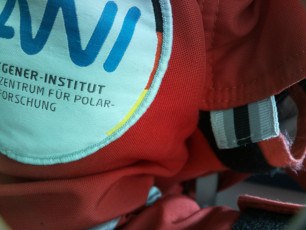TRIPLE IceCraft Expedition to Antarctica – first functional tests of the melting probe – Part 3

The seventh day of our Antarctic expedition to test the TRIPLE-IceCraft melting probe begins for me and all the new arrivals in our segregated living area: our joint COVID-19 test is scheduled with the station doctor and manager. Thankfully, all new arrivals have tested negative! The isolation and mask-wearing are over! In the evening, the whole group gathers to get acquainted with the existing crew of Neumayer III.
Our working day starts with a short walk to the container housing the TRIPLE-IceCraft melting probe. Once there, we remove the snow drifts from the previous day's storm. Thankfully, the tight partition walls of our container prevented any snow from entering. We start by opening the melting probe to install the scientific payloads, consisting of a camera module and an anterior sonar system. To do so, we must first dismantle the front module of the probe.

The camera module was transported by air freight inside a box together with a transport logger. Once the camera module is taken out of the box, the data from the logger is read out. From a series of functional tests of the three cameras, the associated data systems and lighting, we can see that the module has survived the transport undamaged, despite some strong shocks and vibrations. Everything works, and the images are transmitted in real time to our monitoring software.
As bad weather is predicted again for tomorrow, we lock up and stow away everything at the end of the day.

Additional functional tests follow
The next few days are comparable to the previous day. We prepare the control and data acquisition system for the sonar system and test it for transport damage. The sonar system can detect obstacles in front of the probe in the ice and the transition between ice and water. We carry out a functional test in air with a small, external sound transducer. To do this, we point the transducer at a container wall at a distance of about one metre. The system emits a sound signal, the sound is reflected by the container wall and then detected again by the system.
We also examine the TRIPLE-IceCraft melting probe in great detail to ensure as best we can that any problems become apparent before we have started using it.
The TRIPLE-IceCraft melting probe
The TRIPLE-IceCraft probe consists of several modules that are screwed together. In total, the probe is approximately four metres long, 20 centimetres in diameter and weighs almost 300 kilograms. The lower and upper modules each have 'melting heads' that can be heated to thaw ice. This allows the probe to reach a speed of several metres per hour.

The biggest challenge in designing the probe is the winch system for the supply cable. As the probe melts through the ice, it displaces the meltwater. The water collects behind the probe and starts to freeze again. After some time, the probe's supply cable, which connects it to the surface, also freezes. To prevent the probe from getting stuck, most of the cable is actually stored inside the probe itself on a coil. The spool holds several hundred metres of the supply cable and can unwind and rewind it. During the journey downwards, the lower melting head is continuously heated, and the cable is unwound. To ensure that the probe can be recovered after the exploration mission itself is completed, despite the fact that the melting channel is frozen behind it, the probe also has a melting head on its tail module and can thus also melt the ice vertically above it while using a motor to drive the rewinding of the supply cable.
Inside the probe, the supply cable is guided over a drive wheel with the help of some pulleys. The drive wheel and the supply cable are adjusted in such a way that the position of the cable is fixed. The winch system controls the movement of the probe by turning and stopping the drive wheel. Behind the drive wheel, further inside the probe, the cable is guided over various deflection pulleys to a long spool. The last pulley in front of the spool is on a guide and is moved back and forth to ensure that the cable is unwound and rewound in an orderly fashion as the spool moves. Using this system, several layers can be wound onto the spool. Various force sensors and rotation rate sensors monitor the winch system and enable its control.

The supply cable has two electrical conductors that are used to provide power and communication to the probe. The cable also has different layers that provide electrical insulation, mechanical resistance and the tensile strength required to support the weight of the probe.
To prevent the probe's outer walls from freezing, all sides are equipped with surface heaters. Temperature sensors are used to monitor all heating elements, including those of the melting heads. A temperature controller continuously monitors the values of the sensors to avoid overheating, and thus damage or even loss of the probe.
The 'brain' of the melting probe is a small computer that monitors, controls and communicates with all other subsystems via an internal interface. The probe is equipped with a number of sensors used to monitor its inclination, acceleration and the external pressure. To protect these components from water and the pressure of the water column, they are located in barrel-shaped, pressurised enclosures. Only parts of the winch system become flooded with melt water.
Various scientific payload modules can be installed between the lower melting head module and the winch system. For our test, we will use a camera module and also a sonar system, similar to an echo sounder.

We have a lot planned for the next few days. We will integrate and test all of the probe's payload systems and subsystems.
Tags:
